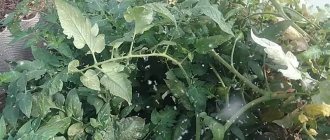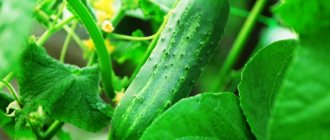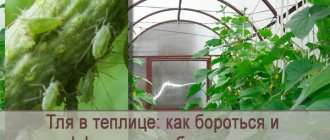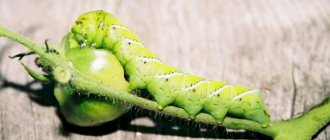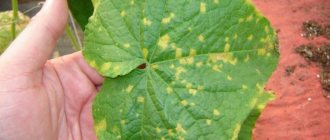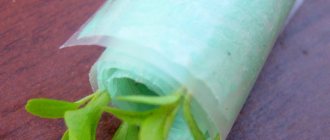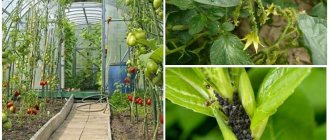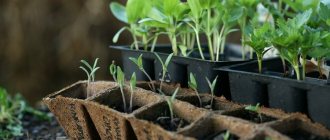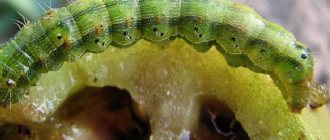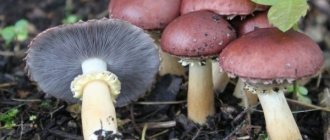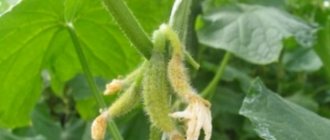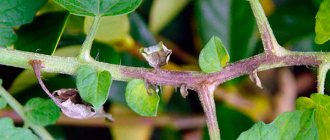This small insect is the most common pest of onions and garlic, and it is not so easy to notice. Therefore, every gardener should be aware of what the onion fly looks like and what means are needed to successfully combat it.
The adult insect is safe for plants because it feeds on nectar and pollen of wild plants. But onion fly larvae are by no means so harmless. The female lays eggs on the leaves of onion and garlic, in the soil next to it, and each individual is capable of producing from 40 to 60 eggs. The development of the egg, depending on weather conditions, lasts from 3 to 8 days, and then the larvae appear, which manage to destroy the entire bulb in the 12-20 days allotted to them. After the larva pupates, the next generation of flies will fly out, and everything will repeat again. In the middle zone, two flights of onion flies occur during the summer.
Description of the pest
The body of the insect is 6–10 mm long and gray with a greenish tint on the back. The pest has black legs and transparent wings.
On the abdomen of males, unlike females, there is a dark longitudinal stripe. Their eyes are located close together, and in females they are separated by the forehead.
The body of the larvae is white, cylindrical, up to 10 mm long. The larva has no distinct head and no legs. The body is narrowed towards the anterior end; a black mouth opening is located here. The abdomen is sloping at the back, and 16 conical tubercles are visible on the anal area. The larvae retain these tubercles when they develop into shiny red-brown pupae (puparia).
The pest lays white eggs, 1–2 mm in size, pointed at one end and blunt at the other.
No. 6. Table salt
Highly salted water is destructive for voracious worm-like larvae. But it also provokes salinization of the soil, which makes it unsuitable for gardening.
So it is recommended to carry out such processing no more than once per season.
Dilute 200-300 grams (a glass) of salt in 10 liters of water and water the moist soil in the garden bed when the feather grows to 8-10 centimeters. After 3-4 hours, water with clean water to wash off the remaining salt from the leaves.
Instead of water procedures, you can add a mixture of soda and salt (1:2) to the garlic and onions 1-2 times during the summer.
Life cycle
The full development cycle lasts 45–80 days and goes through 4 stages: egg, larva, pupa, imago (adult). The pest appears in late April - mid-May during the flowering of lilac and cherry trees. At this time, the bow already has 2-3 feathers. Mating occurs immediately after departure and within a week the females lay their first eggs.
On lumps of earth, around the base of leaves or under dry scales of bulbs, they leave heaps of 5–20 eggs for 2 weeks. Females are fertile, capable of laying 60–200 eggs . The embryo in the egg develops in 3–8 days. The emerging larvae are voracious and quickly bore into the bulbs. In search of food they can move from one plant to another.
The pest remains in the larval phase for 15–20 days. During this time, 4–5 molts occur. As the larvae grow, the upper skin does not stretch much, so the pest sheds it several times.
The time intervals between molts are called instars, each of them lasts 3–4 days. Immediately after molting, the larva's body is tender and vulnerable. The development of larvae is affected by air temperature. The higher it is, the faster this process occurs.
After the last molt, the larvae enter the pupal stage. This is the transitional stage of a larva into an adult insect. Pupation occurs in the ground under plants at a depth of 3–7 cm. The pupae are motionless, but a serious restructuring is taking place in their body.
After 2–3 weeks, the fully formed adult fly breaks through the cocoon, comes out and spreads its wings. He does not leave his place immediately, but as soon as his body gets stronger. Second generation onion flies appear in July . Adults live 12–30 days; to lay eggs, females gain strength from the nectar of flowers.
The pest overwinters in the pupal stage in the ground at a depth of 10–20 cm. Depending on the climatic region, 1–3 generations of insects appear in just one season .
Photo: Know the enemy by sight!
This is what the onion fly and its larvae look like. The fly lays eggs, and over time, larvae emerge from them and devour the leaves and onion heads. The color of the front sight itself is black, rather dark gray. The flight of the onion fly begins in mid-May. Pests lay eggs in the ground or on young leaves. Onions, sweet potatoes, shallots, leeks, and garlic are affected. Plants infested with fly larvae lag behind in development, the leaves turn yellow, and the bulbs rot and soften.
Signs of onion infection
Onion fly larvae
The most dangerous thing for plants ; they do the most damage. They penetrate into the pulp of the bulb through the base of the leaves or from the bottom. They gnaw out large areas, forming passages .
In onions, larvae from one oviposition usually feed on one bulb; in onion sets, they move to neighboring ones and eat away large cavities in the head. With a severe infection, more than 50 larvae can colonize the bulb. The larvae of the first generation destroy early varieties in June, the second - plants in July-August.
In the garden, at the first sign, it is noticeable that the plants are targeted. The feathers of such an onion turn yellow, wither and fold in half, and then dry out . If the plant is pulled out of the ground, you will see that the bulb has softened, is covered with a coating of mold, and the bottom is occupied by small white worms . Damage allows fungal infections to enter the tissue. Infected bulbs rot, and in wet weather this happens faster and smells unpleasant.
In addition to onions, the pest colonizes garlic if it is grown continuously for several years in the same place. The onion fly damages tulip bulbs , as well as carnations, delphiniums, and phlox .
No. 10. Naphthalene
The smell of this substance successfully repels the fly family from onion plantings. In addition, it is quite durable.
Mothballs are ground to powder and mixed with sand (8-10 stinky peas per half bucket). The composition is scattered over the onion plantation. The operation is repeated every 7-10 days during the stage of active reproduction of the pest.
To increase the processing efficiency, wood ash is used instead of sand. The mixture is prepared at the rate of one part crumbled naphthalene to 10 parts ash.
Reasons for the appearance of the pest on the site
The onion fly prefers loam and sandy loam soils, and is less common on peat bogs. Loves beds fertilized with fresh manure.
The pest settles in areas where onions and garlic have been continuously grown for many years. The problem is aggravated by the lack of autumn tillage. Since the pupae remain in the ground for the winter, pre-winter deep digging will help destroy some of the larvae that are on the soil surface.
The number of pests is affected by weather conditions. With sharp spring warming, the activity of onion flour increases. In a wet, cold spring, the harmfulness is reduced, since adult individuals appear later, egg laying and the appearance of larvae are delayed.
The pest may appear on the site when planting onion sets that are infected or not pre-treated.
No. 9. Soap
Typically, liquid or solid laundry soap is used. For 10 liters you need to add 30-50 grams of grated bar or liquid version.
The product is applied not only to the onion feather, but also to the ground around the plants. During the season, 3-4 treatments are done with a week gap between them.
Advice. To prepare a soap solution, soft water - filtered or rain - is better suited.
How to get rid of onion fly
Chemical and biological drugs
Strong chemicals will be needed when the pest appears en masse and over large areas. The onion fly damages plants both in open ground and in greenhouses. If you notice it in time, you can do without chemicals or immediately destroy the affected specimens.
In the larval phase, chemicals penetrate well into the delicate skin of the pest. At this stage, contact treatments will be effective. But processed vegetables are only suitable for eating after 2–3 weeks. It is not recommended to spray onion feathers with chemicals.
Aktara VDG
Plants are sprayed against onion flies with a solution prepared from 4 g of the drug and 10 liters of water. The granules are dissolved in warm water (temperature should not be lower than 25°C).
This volume is designed to process 10 square meters. m. The onions are sprayed for the first time when the dandelions begin to bloom, and after 1–1.5 months the plants are sprayed again.
Alatar CE
The dosage of the drug for pest control is 5 ml per 4 liters of water. The beds with onions and garlic are processed in the morning or evening in dry weather no more than 2 times per season.
Corado
Systemic drug for the destruction of adult onion flies and their larvae. Does not lose its properties in dry hot weather and is not washed off by rain.
The onions are processed for the first time before planting. The seedlings are sprayed with a solution prepared from 15 ml of the drug and 0.2 liters of water. This volume is consumed for 10 kg of sets.
The onion is sprayed a second time when 3-4 feathers grow. The concentration of the drug is 2 ml per 2 liters of water. The solution consumption is 1 liter per 1 hundred square meters.
Summer resident
Biological preparation from Siberian fir extract. Harmless to humans, animals, bees, does not pollute the soil. It is used for spraying.
5 ml of the product is diluted in 8 liters of water. The solution does not lose its properties in cool and rainy weather. But a one-time treatment will not give results. Onions will need to be sprayed at least 3 times.
ExtraFlor
A preparation based on tobacco extract to protect plants from many insect pests, including onion flies. Helps to grow environmentally friendly and healthy vegetables. The contents of the package (1 g) are poured into 1 liter of warm water, mixed and the liquid is allowed to cool. Before use, the solution is filtered.
Fly eater
Diazinon-based insecticide for killing adult flies and their larvae in the soil. For pest control, it is used once before planting onions.
In calm, dry weather, granules are scattered over the soil surface at the rate of 50 g per 10 square meters. m. Then the beds are loosened. Pests die within 2–3 days after the drug enters their body. The protective effect lasts 2 months.
Zemlin
Preparation for soil application. It is scattered over the top layer and at the same time loosened the ground. The consumption rate of the product is 3 g per 1 sq. m. It protects against onion flies for 20 days.
Sochva J
The drug repels the onion fly and does not allow it to settle in the treated area. It is produced in liquid form, it is a concentrate of wood smoke. When using a concentrate, plants are less damaged - by 50%-90%.
5 ml of the drug is mixed with 1.5 liters of water and sprayed onion feathers 2-3 times. The break between treatments is 7 days. The consumption rate of the working solution is 5 liters per 1 sq.m.
Traditional methods
- Onion flies, which appear in the spring, are inactive, fly slowly and sometimes get indoors. If the planting area is small, they can be easily caught by hand or with a net.
- The onion fly is sensitive to odors. To protect plants, solutions are prepared from fragrant herbs, ash, and ammonia. These methods will be effective if applied systematically and immediately after planting the onions.
- Tobacco in its pure form or mixed with ash and ground pepper is scattered along the rows (1–2 kg per 10 sq. m.), and then the soil is loosened. Solutions for spraying are prepared from tomato tops, wormwood, and chamomile. You can place the chopped stems of these plants in the rows. After a week, the wilted tops are replaced with fresh ones.
- The insect cannot stand the smell of tar. Before planting, the bulbs are soaked for 2 hours in a tar solution: 10 g are dissolved in 1 liter of water. The tar smell when spraying onion leaves will repel insects. The crop is treated during the egg laying period. The solution is prepared from 20 g of tar and 10 liters of water. The procedure is carried out 2-3 times with a break of 10-14 days.
- Water the damp soil with a solution of ammonia. 1–2 tbsp. l mixed with 10 l of water. The nitrogen contained in the solution will feed weakened plants and prevent yellowing of the feather tips.
- An old way to combat the pest is to water the soil with saline solution. 200 g of table salt are dissolved in 10 liters of water. The solution is used only on moistened beds. After treatment, they are watered again with clean water. The saline solution is used once per season. They cannot constantly cultivate the soil, otherwise salinization cannot be avoided.
No. 4. Tobacco
The smell of tobacco reliably repels flying parasites from onion plantings. The space around the plants is dusted with the substance at the rate of a tablespoon per square meter. The operation must be carried out on damp soil, followed by surface loosening.
Advice. If there is not enough tobacco, you can combine it with lime or river sand in a 1:1 ratio. More effective additives are mothballs and hot pepper (also 1:1).
Tobacco infusion is also very helpful in repelling flies. Take 200-250 grams of tobacco crumbs per 10-liter bucket of water, leave for 2 days, filter, add soap and generously spray onion foliage. About a liter of this infusion is consumed per square meter.
The frequency of use of the infusion and powder is at least once every 7-10 days.
It is known that nicotine is released only in an alkaline environment. Therefore, it is important to properly prepare the repellent solution:
Is it true that the onion fly does not like the smell of carrots, but onions repel the carrot fly?
Planting these vegetables together repels pests. The onion fly does not like the smell of carrots, and onion phytoncides repel the carrot fly. When planting together, you need to take into account that onions ripen earlier and 2 weeks before harvesting they stop watering them so that the bulbs ripen in dry soil. Carrots still need a lot of moisture at this time. Therefore, it is better to plant crops without alternating rows, but by dividing the bed lengthwise into 2 parts . On one side, onions are planted, and on the other, carrots.
Spotted from nature
All living organisms are afraid of smoke and try to avoid it. The use of the repellent drug “Sochva Zh” - an aqueous concentrate of liquid smoke - is based on this well-known fact.
“Sochva Zh” was tested by specialists from the Khabarovsk Research Institute of Agriculture and was found to be an effective insect repellent.
The repellent is effective for 2 weeks. Despite the environmental safety, you should carefully read the instructions for use.
The reality is that simply planting a bed of onions and occasionally watering and feeding them is not enough.
- Cladosporiosis of tomatoes - what is it and how to fight it in greenhouses? 69 photo ideas
- Treatment of tomatoes (51 photos): fungus, viruses, cladosporiosis, fusarium, macrosporiosis and other diseases
- Ants in a greenhouse (65 photos): how to remove them quickly and safely? Tips, instructions and recommendations
In this case, it is difficult to obtain a rich harvest.
An invisible army of pests acts against gardeners on the ground and in the air, defeating which is impossible without following the rules of agricultural cultivation and protection.
Prevention
- Maintaining crop rotation. The onion is returned to its original place no earlier than after 3 years.
- Planting and sowing early so that the onion has time to get stronger by the time the insect flies. The planting material is pre-etched. To speed up the growth of the heads, at the end of May the plants are fed with urea.
- The soil around the crops is mulched with compost, peat or a mixture of them with crushed coniferous or pine litter. Loose soil makes it more difficult for insects to lay eggs.
- At the first sign of a pest, infected bulbs are pulled out and destroyed.
- In autumn, plant debris is removed from the site, and the soil is dug up deeply.
These measures will not give the pest the opportunity to take over the site and will help to grow onions healthy and without losses.
More details: you will learn how to deal with onion flies from the video.
Preventive measures
Preventive measures are aimed at preventing plant infection. The main recommendation is to change the location for the onion every three years. Before planting, onion seedlings should be soaked for ten minutes in a heated solution of potassium permanganate. At the end of spring, it will not be superfluous to treat the soil with insecticides.
In addition, fertilizer mixtures based on peat, manure and peat must be added to the soil. To prevent midges from approaching the plantings, the seedlings should be treated with bitter compounds based on wormwood, tansy or pepper. After harvesting, the soil must be dug up so that the larvae die from the cold.
Share link:
No. 12. Ammonia
Ammonia is a popular pharmaceutical drug that gardeners respect as a fertilizer and pest repellent.
It drives away onion flies from the beds with a sharp, strong odor. The fight begins with the emergence of the first spring generation, and continues at intervals of 10-12 days. Pour 3 tablespoons of an odorous substance into 10 liters of water.
Due to the fact that the solution also provides nitrogen fertilizing, treatments are completed no later than mid-June.
A more advanced composition is also prepared based on ammonia: a tablespoon of ammonia, 2-3 drops of iodine, a gram of potassium permanganate and boric acid per 10 liters of water. Such a multi-component mixture will not only repel the fly, but will also destroy part of its voracious offspring.
Tips and recommendations from experienced summer residents
Take advantage of some more useful tips from gardeners that will help you avoid mistakes:
- If larvae have already settled in the bulbs, they must be immediately pulled out and destroyed, burned. Never place affected onions in a compost bin.
- A proven method of preventing the appearance of onion flies: 1 tsp. dissolve tar (you can buy it at the pharmacy, it will last for 3-4 years) in 1 liter of water and soak the onion in this solution for about 3 hours before planting. The smell of tar in the garden is almost imperceptible to humans, but it repels pests. Some summer residents grease rags with tar and place them between the rows of onions.
- When adding ash to the soil or watering onions, keep in mind that this product can burn onion roots - strictly follow the dosage.
- If the case is advanced and you cannot do without chemicals, remember that processed onion greens cannot be eaten. Especially if the plants were sprayed.
